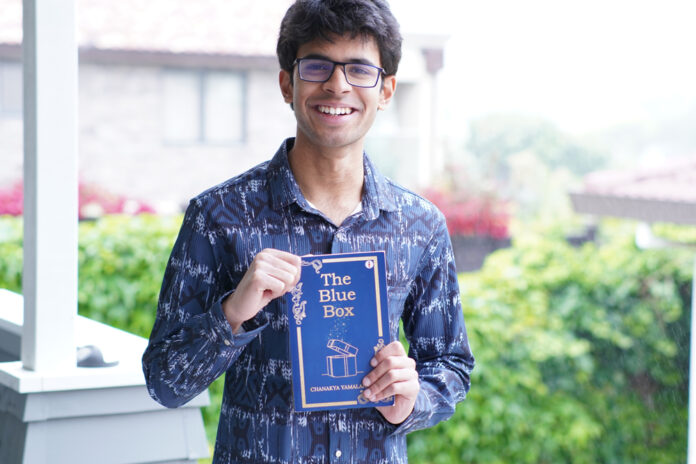An exclusive conversation with the author of The Blue Box – A Haunting Tale of Childhood Choices and Their Unforgiving Consequences
Chanakya Yamalapalli takes us on a gripping journey through the creation of his novel, shedding light on his inspirations, writing process, and the profound themes that shape his storytelling. Join us as we uncover the essence of The Blue Box and its captivating narrative.
1. What inspired you to write The Blue Box, and how did the idea for the story originate?
I didn’t initially have a concrete story in mind. One day in 2022, I came home from school feeling bored and decided to take on something from my bucket list—writing a book. The key elements of the story, including the ending, formed early on, while the middle sections and connections between events developed organically as I wrote. Inspiration came from various sources—movies, music albums, childhood shows, and even a single dialogue from Dragon Ball Z. The Godfather (1972) played a significant role; whenever I needed a creative boost, I would pick a random scene, often the Sicily sequence. I also used mood-specific movie soundtracks and artists like J. Cole to fuel my writing.
2. Can you share insights into your writing process? Do you follow a specific routine or any unique rituals?
At the beginning, I imposed a strict rule of writing at least 500 words a day. This gradually increased, reaching 1,000-1,500 words daily, with some days exceeding 2,000. If I missed my word count one day, I made up for it the next. Background music played a significant role in setting the mood for different scenes. Writing most of the book towards the end of the year helped, as I had plenty of free time to immerse myself in the story.
3. The characters in The Blue Box are distinct and memorable. Were they inspired by real people, or purely from your imagination?
All the characters were purely imaginary. While I did draw inspiration from certain interviews—such as a scene influenced by a Kobe Bryant interview—the characters themselves were entirely fictional.
4. Your book explores powerful themes. What key messages do you hope readers take away?
The main themes are materialism and change. I wanted to highlight how materialistic values don’t contribute to happiness. While not the central focus, this theme is woven subtly yet clearly into the narrative. The most prominent theme, however, is change. Life is a constant evolution, and I wanted to reflect this through the book’s structure—where the first and last five chapters mirror each other, reinforcing the idea of transformation over time. My hope is that readers grasp the ever-changing and impermanent nature of human existence.
5. The world-building in your novel is rich and immersive. How did you approach creating the setting?
Larger settings, like cities and neighborhoods, were inspired by real-world locations, while smaller ones, like houses, were purely imagined. I drew inspiration from my surroundings, incorporating details from everyday observations.
6. How do you balance originality with genre expectations? Were there any challenges in putting your unique spin on familiar elements?
I didn’t think much about genre constraints while writing. The Blue Box blends drama, comedy, romance, and crime—much like real life. Instead of worrying about audience expectations, I focused on crafting an authentic narrative.
7. The pacing of The Blue Box keeps readers engaged. How did you maintain tension and momentum?
I built up major events gradually, ensuring they unfolded naturally. I also used ‘cuts’ and timeskips to eliminate unnecessary filler while reinforcing the theme of change. This approach helped keep the pacing tight and engaging.
8. With changing reader preferences and evolving storytelling trends, how do you see traditional storytelling adapting to contemporary audiences?
While I can’t speak for books specifically, I’ve noticed a shift in Indian cinema towards more personal, emotionally-driven stories—like Jersey (2019) and Meiyazhagan. This trend extends to music and other creative fields. My book, written in 2022, might not fully reflect this shift, but if I create another story in the future, I’d aim to align with this evolving narrative style. That said, I didn’t write The Blue Box with a specific audience in mind—I simply told the story I wanted to tell.
Dive into this haunting tale of childhood choices, fate, and the irreversible consequences of our decisions. Grab your copy of The Blue Box today on amazon!















